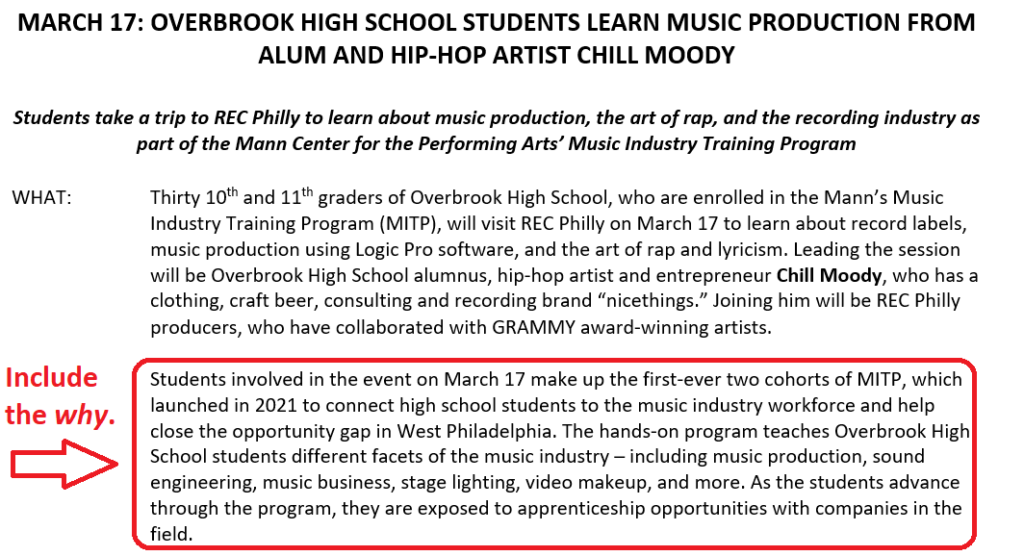My fellow writers of press materials – it can sometimes feel refreshing to shift gears from writing a full-fledged press release to whipping up a quick media advisory to alert the local news desks about an event for your client. After all, it’s just a simple who, what, when and where, and you’re good to hit the “send” button – right?
Aht! Aht! Stop right there.
There’s always an opportunity to sprinkle some color in copy you’re writing – even in a straightforward media advisory. If it’s not clear to the reporter, photographer or news anchor what the greater context is behind the event you’re pitching or what its purpose is – in other words, if there’s no story behind it – then what’s the point?
Plus, reporters appreciate having everything – including background and context — in one place. I staffed a client event earlier this year that I had alerted media about during the week leading up to it. After one of the video journalists filmed everything that she needed at the event and was on her way out, I thanked her for coming and asked if she needed anything else – like a physical copy of the media advisory. She said she already had the copy we distributed, and then followed that with a message of thanks for providing all the details she needed.
She said she receives a lot of media advisories that just provide basic details (like date, time and place), but not many that list full expectations for the event and explain the why.
Take it from a media representative – we are not including enough information in our advisories. Now, don’t get me wrong … they still need to be short and generally shouldn’t exceed one page, but there’s way to keep it short while covering all of the bases.
Let’s briefly go over how we can accomplish this.
- Start with an eye-catching headline. Like a press release or a news story, a media advisory should begin with an attention-grabbing headline that gets straight to the point of what will happen at the event. These headlines are generally followed by a subhead that provides a little more context.
- Include the why in the “What” section. This is the bread and butter of your media advisory – the chance for you to include everything the news outlets need to know about what will happen during the event. Not only should you list all components of the event in this section, but also give a sentence or two about the reason the event is taking place. In journalism terms, this is the “nut graph” that provides context and the reason why anybody should care about the event.
Typically, broadcast stations will use information in this section for their narrative, so you’ll want to give them the complete story.

- State who will be there. Typically following the “What” section, the “Who” section should list all key players for your event – whether it be a keynote speaker for a presentation, an elected official at a press conference, volunteers at a charity event … you name it. List the full name, followed by the person’s position (make sure you double-check for accuracy!). This especially comes in handy in case a photographer or reporter plans to interview someone at your event.
- Include details on date, time and place. You know this, but every media advisory should include these important details to ensure the event gets on the outlet’s calendar.
I want to hear your thoughts on what makes a media advisory guarantee great coverage for clients. Connect with me at mbatipps@devinepartners.com!


